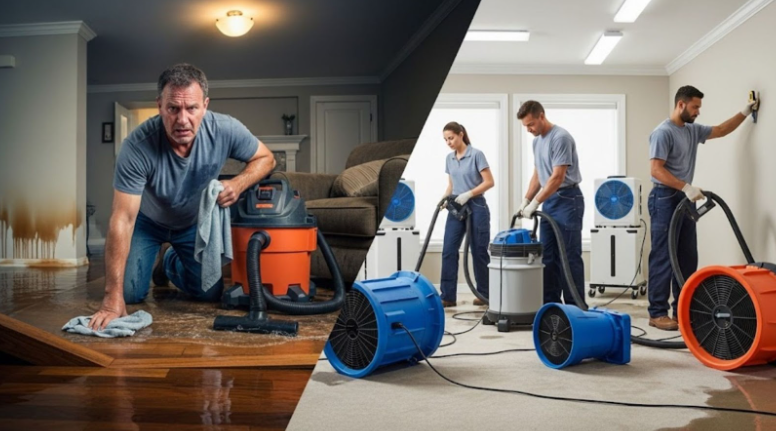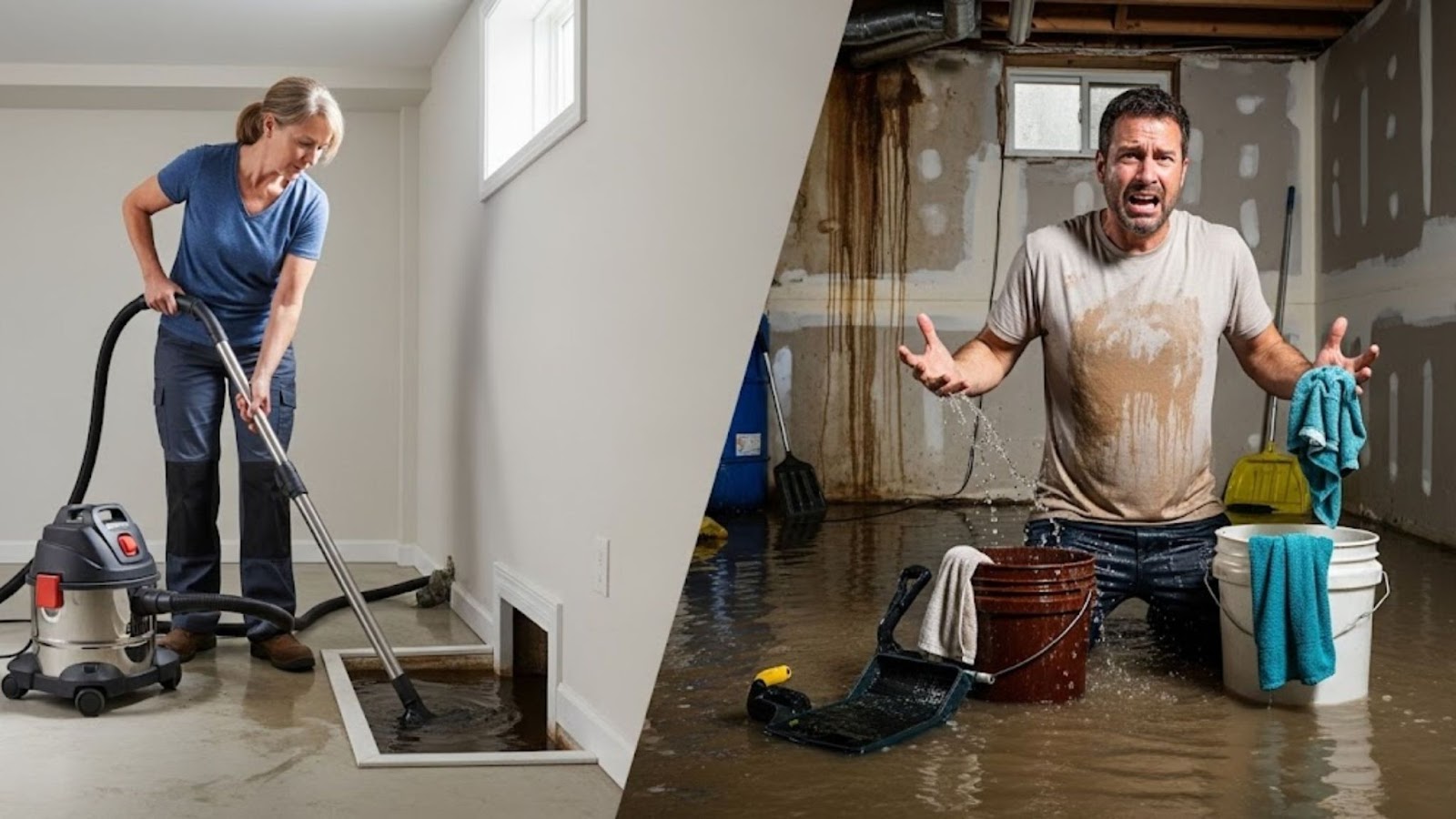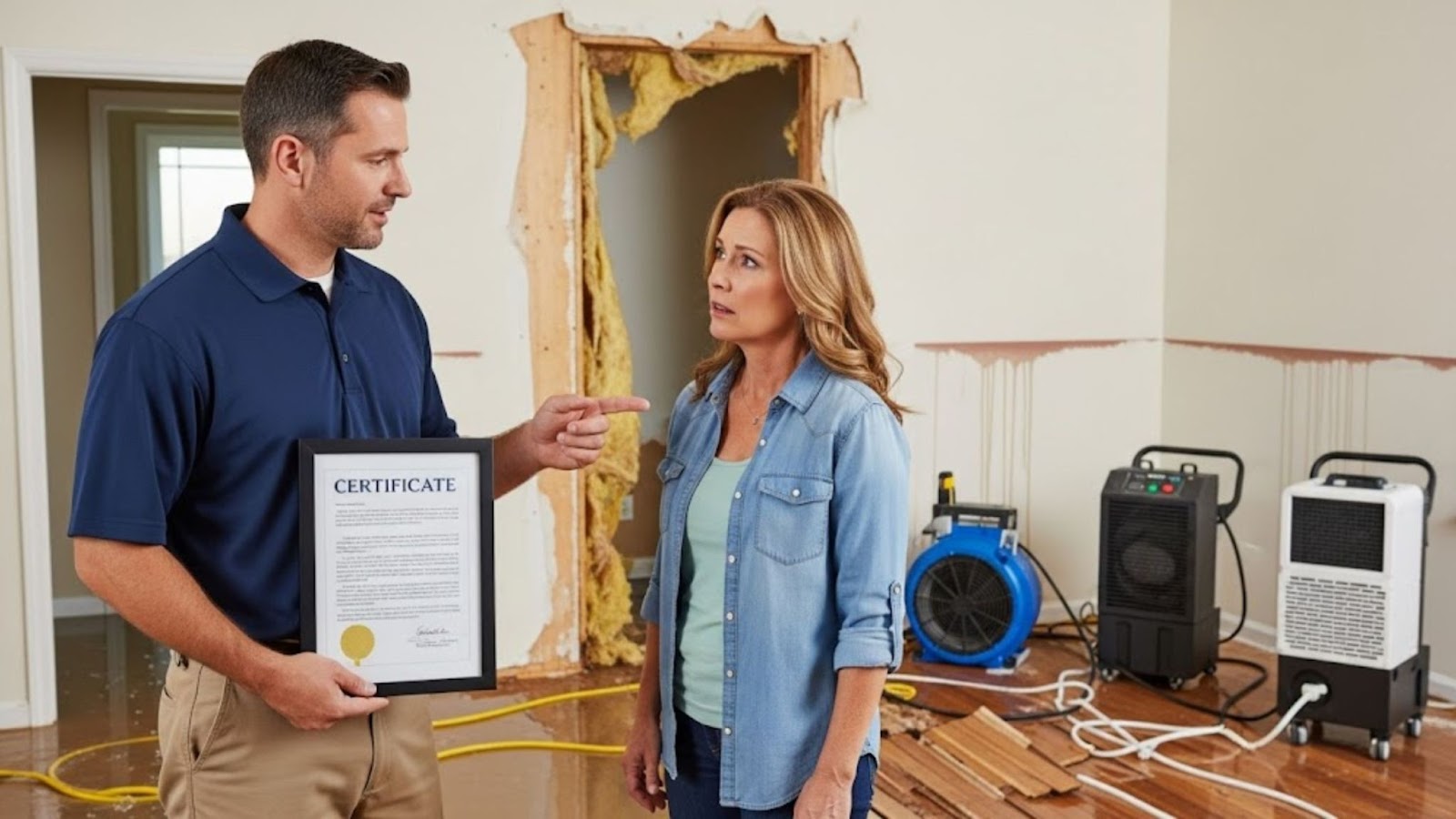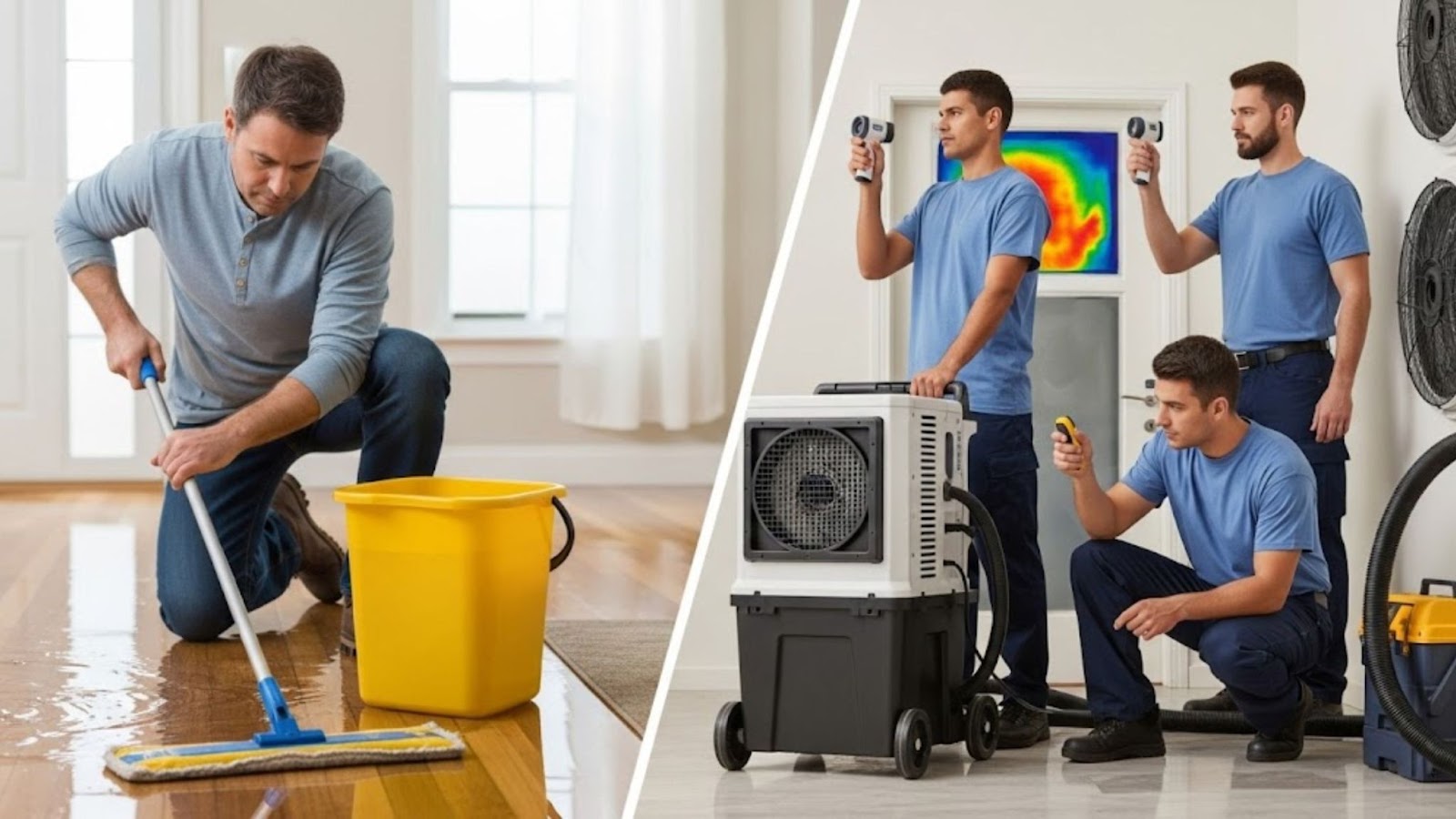
In the aftermath of a pipe burst, flooding, or hidden leak, property owners face a critical decision: should they tackle cleanup themselves or engage certified restoration experts? Water Damage Restoration Services often determine the difference between a swift, thorough recovery and lingering structural issues or mold infestations. By weighing the scope of damage, available equipment, and long-term risks, homeowners can choose an approach that aligns with their budget and safety standards. This comparative guide explores DIY water cleanup alongside professional water mitigation services, helping property owners make an informed, semantically optimized decision.
Water Damage Restoration Services encompass a spectrum of interventions—from simple water extraction to comprehensive structural drying and mold remediation. When damage is confined to a small spill or surface-level leak, DIY water cleanup can be sufficient. However, once water intrusion extends into walls, subfloors, or insulation, professional intervention becomes crucial. Certified restoration experts utilize industrial dehumidifiers, thermal imaging cameras, and moisture meters to detect hidden pockets of moisture that DIY methods often miss.

DIY water mitigation services appeal to homeowners seeking cost savings and immediate control. Armed with a shop vacuum, box fans, and a rental dehumidifier, a diligent homeowner can reduce standing water and begin drying exposed surfaces within hours. For minor leaks behind a bathroom vanity or small appliance overflow in a kitchen, this approach may suffice for preventing surface mold and salvage basic fixtures.
Yet limitations quickly surface when water migrates into wall cavities or beneath hardwood floors. Household tools lack the extraction power of submersible pumps or truck-mounted vacuums. Without professional drying protocols—such as creating negative air pressure and setting up strategic air movers—moisture can linger in hidden crevices. Over time, this leads to microbial growth, compromised structural components, and higher repair costs than the initial DIY savings.
Mid-way through assessing options, some homeowners discover that timely Water Damage Restoration Services provided by certified teams mitigate these risks efficiently, especially when paired with moisture mapping and prolonged monitoring.
Homeowners tackling small-scale water damage should have on hand:
While useful, these items cannot replicate the power and precision of:

A critical milestone emerges when water exposure exceeds 24 hours or when homeowners detect musty odors and visible mold spores. Certified restoration experts follow guidelines from the Institute of Inspection, Cleaning and Restoration Certification (IICRC) to classify damage by water category (clean, gray, black) and saturation levels. This ensures that each phase—extraction, structural drying, and mold remediation—aligns with safety protocols and insurance requirements.
Complex scenarios warrant professional water damage restoration:
In these cases, engaging a full-service provider delivers advanced drying strategies, microbial control, and structural repairs while handling insurance documentation.
Professional teams begin with a thorough assessment using calibrated moisture meters and hygrometers. They map moisture content across walls, floors, and ceilings, establishing drying goals for each material. Advanced extraction pumps remove residual water, while structural cavities receive injected air flows to evacuate hidden moisture. Technicians deploy antimicrobial treatments to inhibit mold growth, followed by ongoing monitoring until humidity levels reach safe thresholds.
Within hours, a coordinated crew can transform a water-logged environment into a stable, dry space—far beyond the capabilities of most DIY efforts. This rapid, systematic approach underscores why many property owners opt for specialized water mitigation services rather than a home-based cleanup.
Once professionals arrive, they implement an integrated plan that addresses every facet of water intrusion. First, they secure the property, cutting off electrical circuits in affected zones and installing containment barriers to isolate wet areas. Next, they deploy water extraction units—ranging from high-capacity submersible pumps to truck-mounted vacuums—to remove standing water swiftly. This is followed by the strategic placement of air movers and industrial dehumidifiers, calibrated to reach target grain levels of moisture removal.
As drying progresses, technicians conduct periodic inspections using thermal imaging cameras to confirm that hidden moisture pockets dissipate. Concurrently, they treat building materials with EPA-approved antimicrobial solutions to prevent mold colonization. Finally, the crew documents every phase, generating moisture logs and final reports for insurance claims—an invaluable service beyond what most homeowners can provide on their own.
Rapid Response Guarantee serves as a hallmark of professional water damage restoration, assuring property owners that trained crews will mobilize at a moment’s notice. This swift action limits secondary damage, expedites insurance processes, and reduces overall restoration costs.

Technological advantages define the gap between DIY water cleanup and professional restoration. Key professional tools include:
DIY consumer models lack the throughput and precision controls necessary for large-scale water intrusion. In contrast, professional restoration providers employ calibrated sensors and advanced drying protocols aligned with IICRC standards to achieve complete structural dryness within days.
Insurance coverage often dictates the scope and choice of restoration method. Standard homeowners policies typically cover property damage from sudden, accidental water events—such as burst pipes or appliance failures—classified as clean water loss. However, flood damage, sewage backups, or long-term leaks often require separate riders or specialized endorsements.
Professional restoration companies frequently liaise directly with insurers. They submit detailed damage reports, moisture logs, and cost estimates to ensure homeowners receive full compensation under policy terms. By contrast, DIY claims may lack the documentation required to secure comprehensive coverage, leaving property owners vulnerable to out-of-pocket expenses for latent defects and mold remediation.
Cost considerations often motivate homeowners toward DIY restoration. With basic tools rented for a few days, immediate savings may reach several hundred dollars. For very small incidents—such as an upturned bucket or a slow leaking faucet—this approach can suffice.
Nonetheless, the perceived savings vanish when hidden moisture triggers mold growth or structural decay months later. The average mold remediation project can exceed $3,500, while major structural repairs due to wood rot and sagging ceilings may escalate beyond $10,000. In comparison, a professional water mitigation service call for moderate damage often ranges between $2,500 and $6,000, inclusive of advanced drying, antimicrobial treatment, and documentation for insurance claims.
When water damage impacts only surface-level materials and immediate action is taken, a well-equipped homeowner may navigate a successful DIY cleanup. However, once water infiltrates multiple layers of building assemblies or introduces health-hazardous contaminants, professional water damage restoration is unequivocally the prudent path. Certified experts not only restore property to pre-loss condition but also safeguard long-term structural integrity, indoor air quality, and occupant health.
In situations that exceed simple cleanup—especially in commercial settings or multi-unit dwellings—engaging a full-service provider that deploys a specialized Disaster Response Team ensures continuity of operations and rapid environmental stabilization.
Ultimately, the decision to pursue DIY water cleanup or enlist professional restoration hinges on the extent of damage, the homeowner’s technical expertise, and the need for comprehensive moisture control. While DIY methods may offer short-term savings for trivial incidents, certified restoration experts deliver enduring benefits in moisture mapping, mold prevention, and insurance advocacy. By entrusting property recovery to trained technicians, homeowners achieve faster drying times, fewer secondary damages, and peace of mind.
ReBuilders Commercial Restoration stands ready to provide trusted, certified water mitigation services tailored to residential and commercial properties. Through a commitment to rapid response, advanced equipment, and transparent communication, this team ensures every restoration project meets the highest standards of safety and quality. For expert assistance that prioritizes property integrity and occupant wellness, homeowners are encouraged to Contact us and explore how professional intervention can preserve their most valuable investments.
Clean water originates from sanitary sources like broken water lines or rain. Gray water contains moderate contaminants from appliances or washing machines, posing mild health risks. Black water carries pathogens, typically from sewage or floodwaters, requiring specialized containment and disposal protocols.
If standing water persists beyond 24 hours, moisture infiltrates walls or insulation, or mold growth becomes visible, it’s time to call certified restoration experts. These scenarios demand advanced drying equipment and microbial control measures.
A professional water damage restoration process, including extraction, structural drying, and microbial treatment, often spans 3–7 days for moderate damage. Complex scenarios involving contaminated water or extensive flooding may require up to two weeks, depending on environmental conditions and construction materials.
Quick water extraction, thorough drying with fans and dehumidifiers, and application of household antimicrobial sprays can reduce mold risk in small incidents. However, without moisture mapping and continuous monitoring, hidden damp zones may still foster microbial colonization.
Standard homeowners policies usually cover sudden clean water losses but exclude flood or sewage events. Professional restoration companies assist with detailed documentation—such as moisture logs and damage reports—to maximize claim approvals and minimize out-of-pocket expenses.